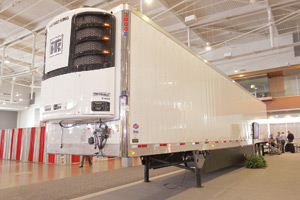Final EPA Rule Grants 3-Year Extension for Makers of Refrigerated Trailers

A new final rule from the Environmental Protection Agency gives the manufacturers of refrigerated trailers and their suppliers another three years, through 2019, to develop a new foam-blowing agent that does not incorporate strong greenhouse gases.
The EPA rule on the Protection of Stratospheric Ozone bans the use of HFC-245fa, a hydrofluorocarbon, as of Jan. 1, 2020. A 2014 proposed version of the rule used Jan. 1, 2017, as the switchover date.
The rule issued July 2 also alters the type of refrigerants that can be used in straight truck and trailer refrigerated units. R-404A is being phased out on a variable schedule.
Foam-blowing agents are used by trailer makers to fill the gap between a trailer’s inside and outside walls. The blowing agent starts a chemical reaction that begins to change the insulation into its final form.
Although the rule’s name mentions high-altitude ozone, the regulatory effort is related to greenhouse gases and climate change.
The chemical industry used to supply manufacturers with chlorofluorocarbons to perform these tasks, but since 1987 the United States and other nations have been trying to minimize the use of CFCs because they deplete the ozone layer of the atmosphere.
HFCs became a common substitute, but they have been found to be powerful greenhouse gases, much stronger than carbon dioxide. Therefore, HFCs are being phased out in favor of a new generation of chemicals.
Engineering executives from Utility Trailer Manufacturing Co. and Great Dane Trailers welcomed the extension, saying it will allow them to more thoroughly develop and test replacements before bringing new refrigerated trailers to market.
Foam-blowing agents, they said, are important not only for their insulating qualities but because they improve the structural integrity of the vans.
Executives from Thermo King, a manufacturer of reefer units, said the company probably will use a refrigerant popular in Europe as a replacement for R-404A.


